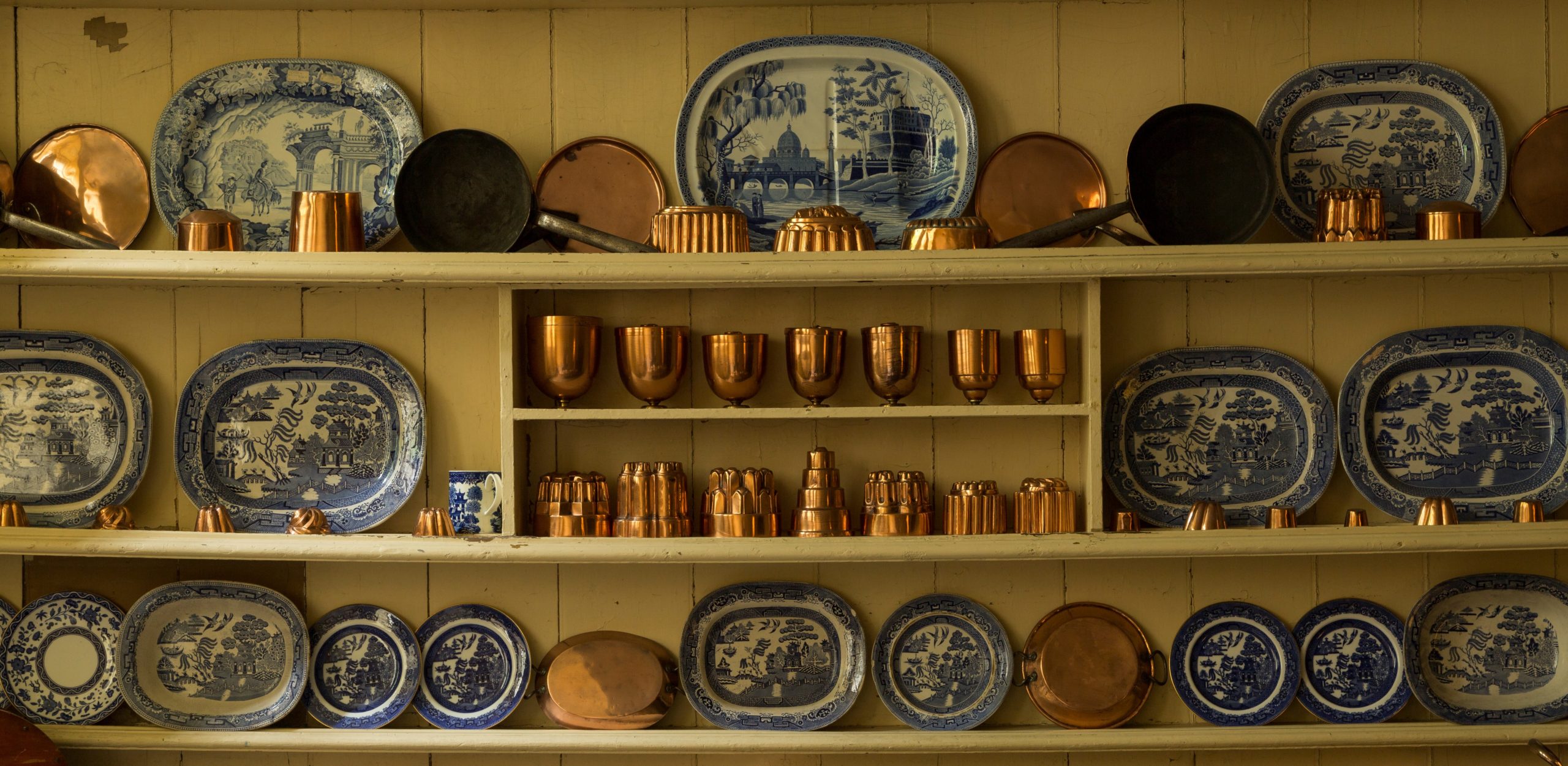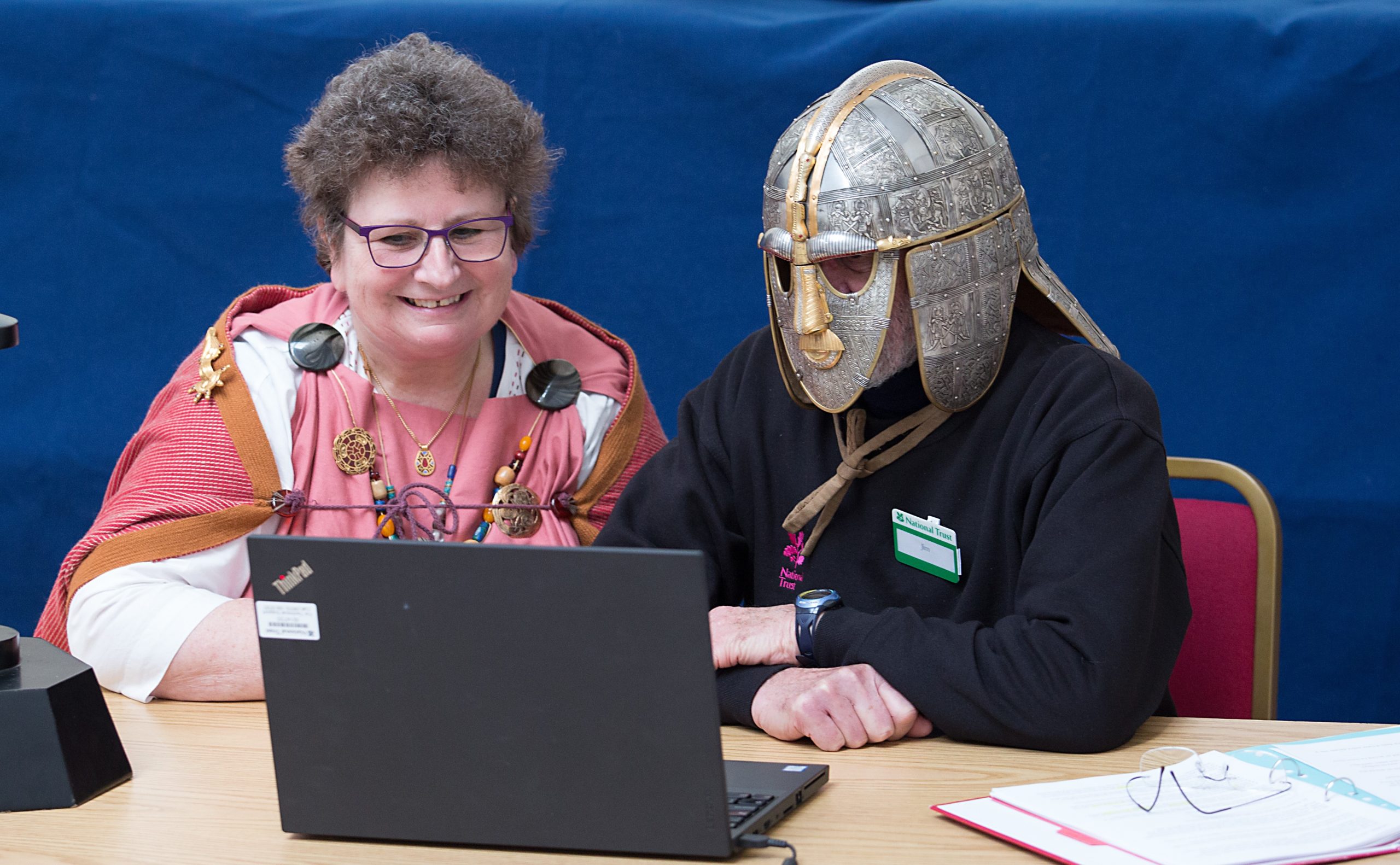-
Creating an online curiosity cabinet: Digitising historic collections
Posted on May 20, 2020
Close up view of the dresser in the Kitchen in the basement at Uppark, West Sussex. Containing blue and white china, copper moulds and saucepans.
Digitisation of cultural heritage can be a crucial tool in today’s efforts towards the conservation, study and promotion of European cultural resources.
Collaboration with the Lottery was one of the specific practices identified by the Innocastle team on their study visit to the UK in May 2019. The ‘good practice’ is available on the Interreg Europe Policy Learning Platform with additional resources here on the INTO site.
Readers directed here from the Interreg Europe Policy Learning Platform – please scroll down for a selection of resources.
Creating an online curiosity cabinet: Digitising historic collections
From fire and flood, to war and neglect, cultural resources are under threat all over the world. Recent blazes at Notre Dame and the National Museum of Brazil have highlighted the need to record this unique heritage for future generations. And conservation experts are increasingly turning to digital technology to document the unique artefacts, monuments and sites in their care. This not only supports any future restoration challenges, but the digitising cultural heritage also increases public access.
The National Trust began work on digitising its fabulous collections (over 300) about twenty years ago. In partnership with the Royal Collection, the Trust created and installed a new system in 2009. Hundreds of staff and volunteers across the UK now use it daily. And in December 2011 the Trust launched the Collections website, providing vital public access to over 1 million online items.
Data were first captured locally, taken from the Trust’s traditional inventory cards. Staff and volunteers added new digital photographs and checked, marked and counted each item. Eventually all the entries were merged into the one new system.
Each National Trust collection is different, a personal creation reflecting the lives and characters of individual people. Now we can begin to see and appreciate the collections held by the Trust together, as a vast National Trust online museum, through which we can chart developments in taste, technology and society from the 16th century to the present day.

A school webex session at Sutton Hoo, Suffolk.
Potential for learning transfer
The project is far from over and the National Trust plans to continue gathering new information and stimulating new research. Thus each phase of the project has provided insights and information which could be shared with others around the world.
The C-19 pandemic this year has seen cultural venues everywhere take their work online. Since the start of outbreak, visits to the Paris Louvre’s website have exploded, going from 40,000 to 400,000 per day.
Thus when its properties closed, members of the public were still able to explore the collections in the Trust’s care.
Through articles and virtual exhibitions to social media posts about writing letters, spring cleaning or celebrating VE Day, the Trust’s accumulated know-how in using this vast online resource has great potential for transfer. Along with it’s experience of virtual content driving actual visits. (The Trust had 263,000 visitors to its website over Easter, compared to 753,000 last year when its properties were open.)
Resources
National Trust Collections: ‘Are you really going to count all the teaspoons? And just how many are there? Where is the Trust’s oldest teapot? Will I be able to look up all the Trust’s treasures?’ These are just a few of the questions I have answered over the past 15 years about the project to digitise the National Trust’s fabulous collections. Now, a search on this website www.nationaltrustcollections.org.uk can answer these and all your questions on objects to be found at the one-time homes of the famous (such as Agatha Christie), the aristocratic and the working class. Here you will find records of over a million objects, from laudanum bottles to a pair of Aertex underpants, sedan chairs to an early anti-ageing ‘rejuvenating’ machine, fine old masters to a lavish Georgian doll’s house. The National Trust hopes people will use its online resources to explore the collections in its care.
(This is taken from an article, The Online Curiosity Cabinet in which Head of Collections, Philip Claris explains the work of digitising the National Trust’s collections.)
Virtual visits: See the world’s sites from your sofa! We have gathered together 14 virtual visits, selected from amongst INTO members’ World Heritage Day posts. They shared drone-shot footage, online tours and virtual walk-throughs that together show how heritage trusts globally are responding to COVID-19.
National Trust Images: You can also visit the National Trust’s online photo library here.
The Story of Easter Eggs in the National Trust Collection: As we celebrated Easter in lockdown this year, the Trust shared some of the many eggs in its collection on its website. It was a very popular post.

 44 (0)20 7824 7157
44 (0)20 7824 7157